The bloody, brutal reality of The English’s frontier: ‘There were spasms of extraordinary violence’
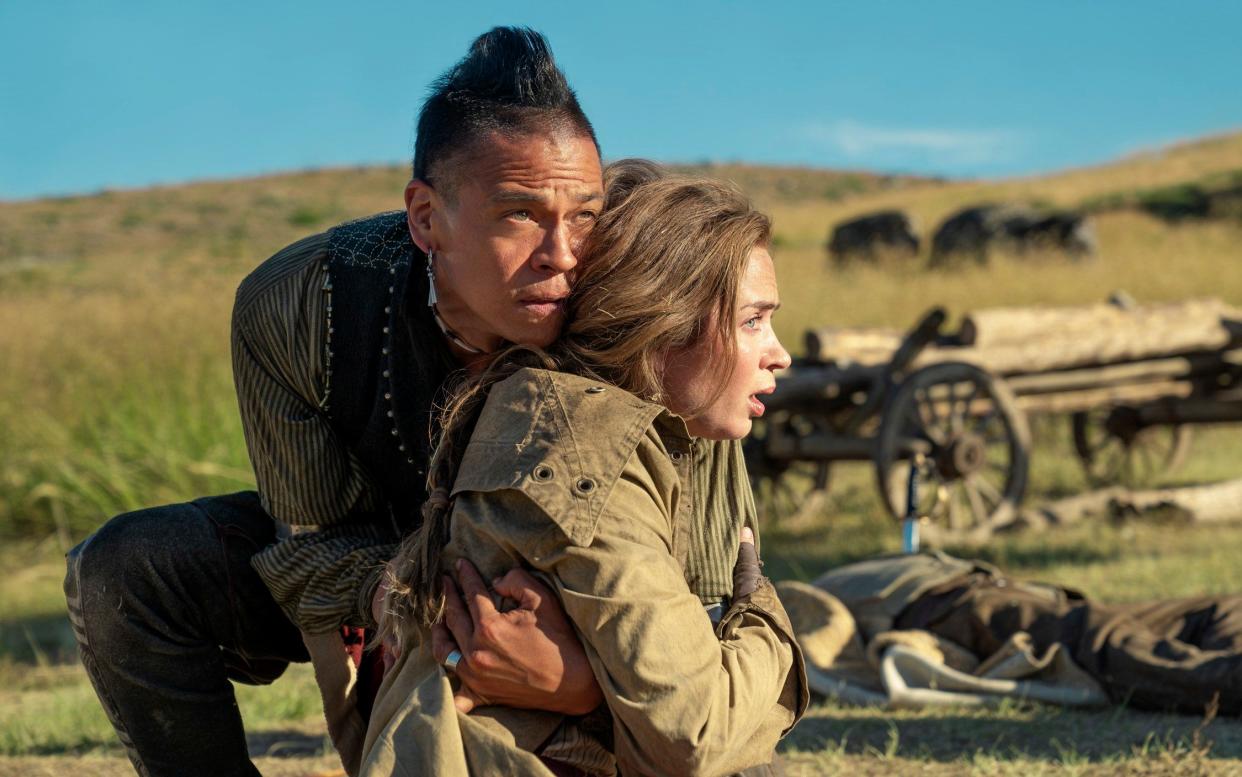
The BBC’s new Western series, The English, leaves about as much to the imagination as its most horrifying character: a prairie-dwelling Welsh crone whose eyelids were sliced off yonks ago. Inside her humble abode, she decorates the walls with Indian scalps.
And that’s just scratching the surface. The English – from writer-director Hugo Blick – is a knowing gallop into the darkest fringes of the American Frontier.
In the six-part drama, the Great Plains are scattered with strung-up arrow-skewered Natives, lead-ridden corpses, and kooky sun-baked killers. There’s nary a trustworthy person for three states. Meet someone – anyone – out on the plains and it’s a case of shoot or be shot. Like so much of the genre, this is the Old West as a lawless, violent nowheresville – a place where civilised people are turned savage. The English is as much about the myth of the Western. But how much of the Western genre is real history? And what, if anything, depicted in The English is based on historical reality?
“It’s all made up,” says historian Josh Garrett-Davis, author of What is a Western?. “It’s almost like Arthurian legend. It has some distant basis in historical reality. But filmmakers and showrunners are creating mythic stories.”
Set in 1890 – generally accepted by historians as the end of the Frontier Era – The English stars Emily Blunt as Lady Cornelia Locke, a robust blueblood from London who travels to the West to avenge her son’s death. Arriving in Kansas and heading to Wyoming, Cornelia pairs up with Eli Whipp (Chaske Spencer), a Pawnee Scout who has just retired from the United States Cavalry.
In the show, “the English” doesn’t just mean the English. Rather, it’s a catch-all term for Europeans settling in the West (defined as anywhere west of the Mississippi River). Though the posho English settlers do play cricket at one point. “I’ve never seen anyone play cricket in a Western!” laughs Garrett-Davis.
It’s true that English aristocracy journeyed to the West as part of a Victorian fascination with Frontier America. In the series, Tom Hughes plays Thomas Trafford, a naïve, terrible-with-money milksop who’s shipped off to Wyoming to oversee business in the open range cattle industry. Trafford represents a point of historical fact: English aristocrats buying into the booming cattle business and sending younger sons to the West to keep them occupied (though the beef boom soon bottomed out). Like the cricketers in The English, they also brought Englishmen’s games to the prairies: they played tennis and set up a steeplechase course.
The English also depicts true-to-life frictions between upper crust Brits and Frontier Americans. The Americans resented their class-based entitlement and pretensions. “This was a place where no one cared who your father was,” wrote historian Peter Pagnamenta in Prairie Fever. One cowboy tells Trafford straight in The English: they ain’t got no class system out West. The English – white Europeans in general – are likened to rapidly-multiplying parasites in one episode.
And what about its depiction of Native Americans? In writing the series, Hugo Blick undertook significant research and collaborated with IllumiNative, a Native-led racial and social justice organisation, as well as representatives from the Pawnee and Cheyenne Nations.
The English is a reckoning with the destruction, dispossession, and displacement of the Native peoples. In the series, one Wyoming town – one of those half-finished towns you see in most Westerns – is quite literally built on dead Native Americans.
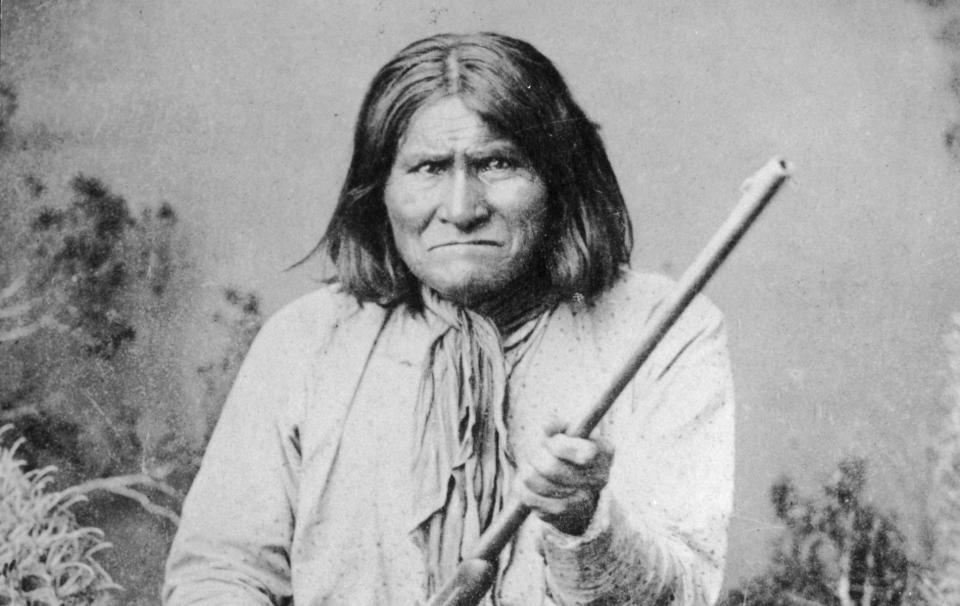
The 1890 setting is also significant for being the year of the Wounded Knee Massacre. At Wounded Knee Creek, South Dakota, on December 29, 1890, members of the 7th Cavalry Regiment killed 300 men, women, and children from the Lakota people. “It’s a critical event in 1890,” says Andrew Graybill, a professor of history at Southern Methodist University, Dallas, Texas. “Most historians would think of it as the last armed engagement between American troops and Native peoples of the plains.”
It was also ultimately a massacre of a religious movement, the Ghost Dance, which had swept through the Native peoples. The Ghost Dance was a circular, ceremonial dance that arose in response to the Natives’ treatment at the hands of whites – a spiritual call to return dead Indians, oust the white man, and restore their lands. White Americans were alarmed – some said the Ghost Dance was a prelude to attack. The “Ghost Dancers” are referenced in The English. “Dancing Indians? That’s something to be afraid of?” says Emily Blunt’s Cornelia. “It is when they stop,” responds Ciarán Hinds’ oddball baddie.
The series is haunted by a similar massacre, and begins with the US Cavalry executing a Cheyenne warrior. The execution is witnessed by Eli, on his last day serving with them. Though he stops further killing, other Natives scold him for riding and fighting alongside the Americans. In their eyes, he is seen as “one of them”.
“The US army or any number of state militia would have been lost in the field without considerable help from Native scouts – that’s true,” says Graybill. “There were compelling reasons to do so. There was good pay, for starters. It’s contentious. The descendants of such folk may live side-by-side with others on the reservations today. There’s no doubt that some folks see them a little less fondly – seeing them as collaborating with the army.”
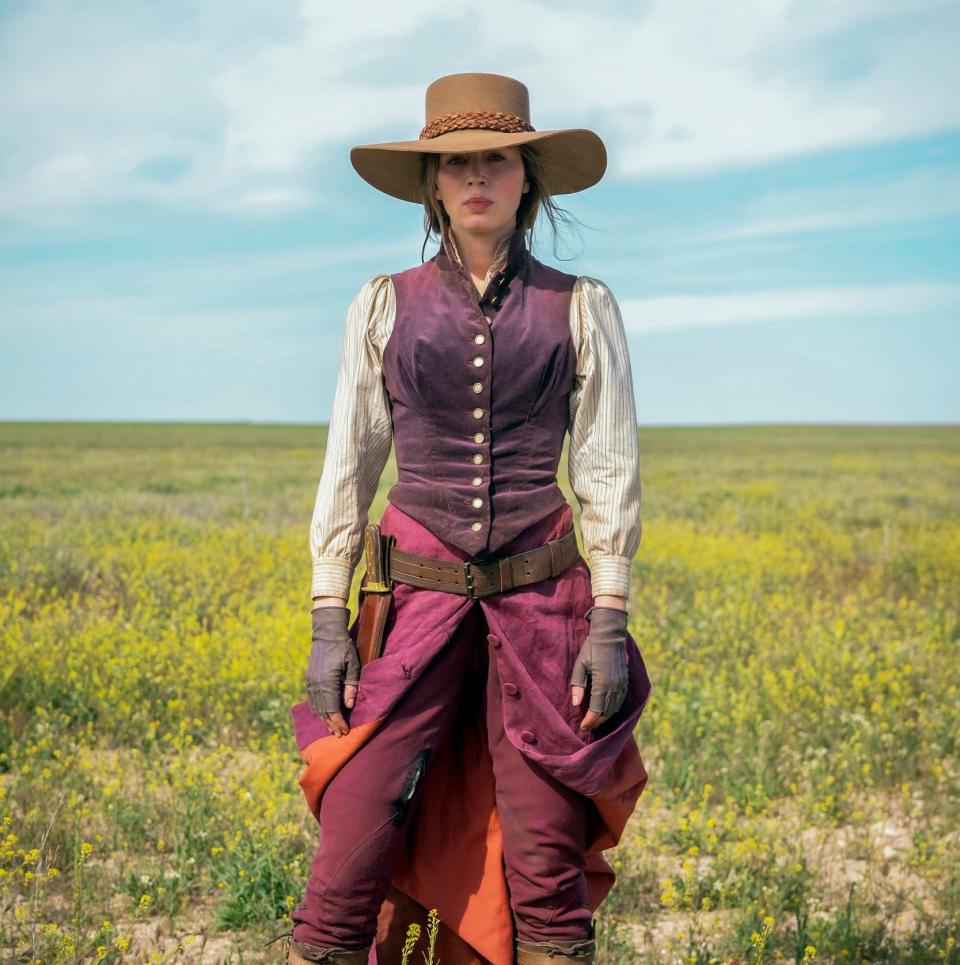
In The English, Eli's ultimate plan is modest: to venture to Nebraska and claim land he’s owed as part of the real-life 1862 Homestead Act, which allowed people to claim 160 acres and drew settlers to the West. A fellow cavalryman warns Eli that he’ll never be given the land because he's Indian – despite being a veteran of the United States Army.
“Pawnee often worked as scouts for the government in the northern plains,” says Garrett-Davis. “Then they got moved south in what was effectively ethnic cleansing – moving as many Native people as possible to Oklahoma, and other places in confined reservations. It was almost a form of incarceration at that point. A lot of Native children were taken to church or boarding schools. Not necessarily with parents’ consent.”
In the show, Frontier types brag about what it means to be authentically American – this is “the real America,” says Ciarán Hinds’ character – while Native people are forced to the edges of the white man’s world: hunted down or beaten for wandering into the wrong territory; or forced into servitude. “You wanna survive in a white man’s world, you have to become one,” says one character. “Simple as that.”
“The army’s stated goal by the late 19th Century is to get Native people on reservations – to clear land for white Americans for the range cattle industry,” says Graybill. “Ultimately, this job was left more to missionaries than the federal government, to ‘missionize’ and ‘civilise’ Native peoples – to force them to assimilate. That’s the real goal.”
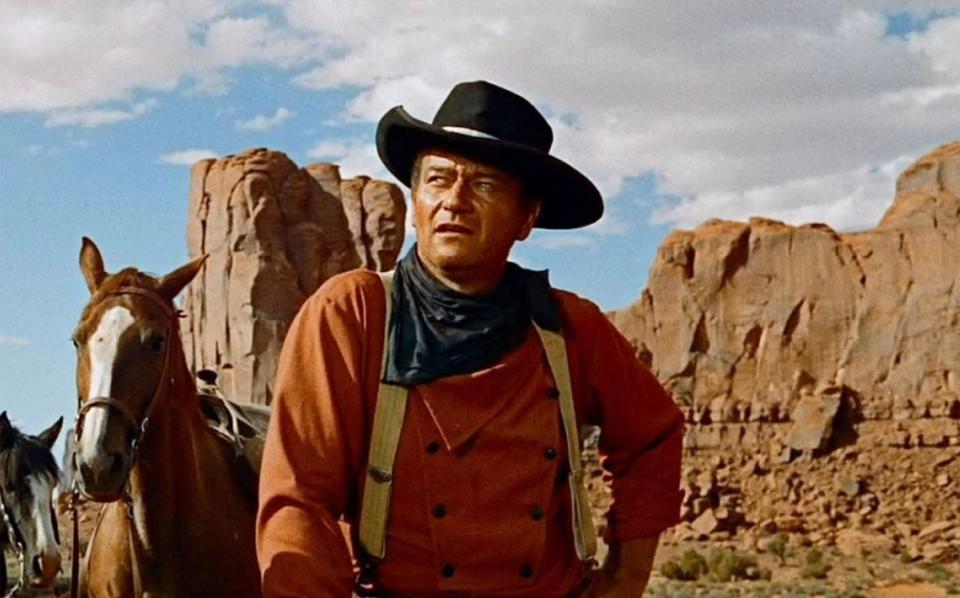
Interestingly, Eli assimilates in a different way – a Native American character who takes the role of the alpha hero, traditionally played by the likes of John Wayne or Clint Eastwood. Such icons of the Western genre, from stars such as Wayne and Eastwood to the voice of Cormac McCarthy, have dictated popular understanding of the West.
“Most people’s basic idea of the West comes from fiction,” says Garrett-Davis. “It speaks to this thing of how different eras find their own version of the West. John Wayne stands for this conservative nationalistic idea of the heroic American man, whereas Cormac McCarthy stands for a much darker view of the West.”
The English is a dusty, disillusioned Western in the revisionist tradition – like The Wild Bunch, a morally murky landscape in which nobody is strictly a white hat or black hat – but layered with an idea of a more cosmopolitan West. That certainly reflects the reality of the Frontier. The show has English, Germans, Austrians, Welsh, Scottish, and Northern Irish. “If you're thinking about the 1890s on the Northern Plains, there’d be people speaking all different languages, like Norwegian or Czech,” says Garrett-Davis. “In a way, the West was a very cosmopolitan place – which hasn’t got its due in Westerns.”
The big question is: was the Wild West really as wild as it’s depicted in the Western genre? The English certainly follows the well-worn trail of brutal-but-romanticised violence. Almost every character that Cornelia and Eli meet along the way is destined to kill or be killed, while cavalrymen stalk the plains, seemingly out to murder Natives.
Yet during the period of overland migration and settlement in the West, which began in earnest in the 1840s, there was relatively little violence.
“There’s plenty of fear of attack by Native peoples,” says Graybill. “But in many ways, they’re more vulnerable at the hands of other overland migrants. However, the influx of white Americans looking to displace Native peoples from their land, also opening up territory for ranching and mining, does cause a lot of violence between US Federal troops and Native peoples. The high watermark of that is the Sand Creek Massacre in 1864 [in which 230 from Cheyenne and Arapaho peoples were slaughtered]. There were spasms of extraordinary violence against Native peoples up until 1890.”
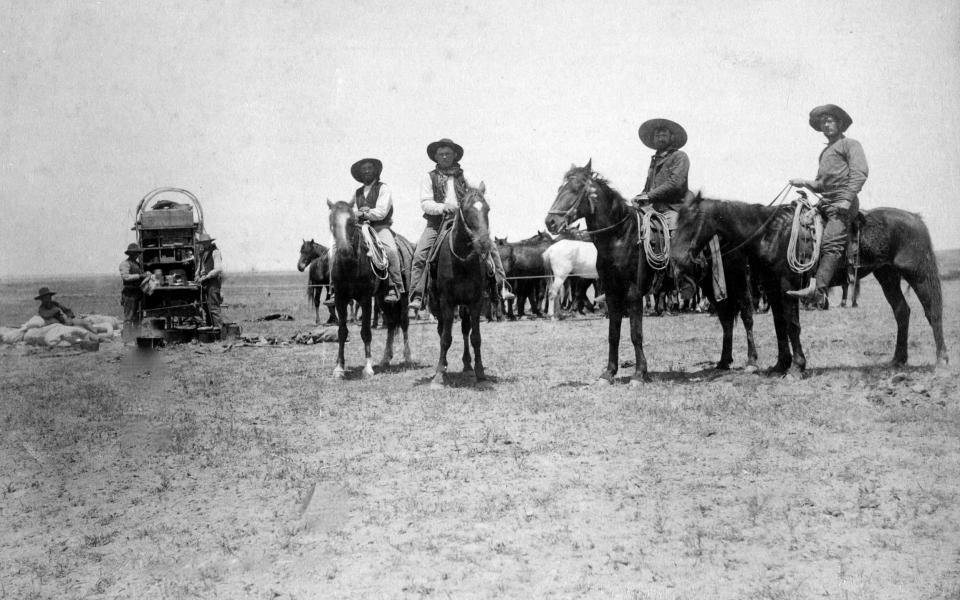
There’s also no shortage of scalping in The English – portrayed as a gruesome tit-for-tat between the most bloodthirsty Natives and whites. “In the course of the Indian Wars, both US forces and Native people did at certain points practice scalping,” says Garrett-Davis. He points to Buffalo Bill Cody, who scalped a Cheyenne named Yellow Hair. Buffalo Bill re-enacted the incident and brandished the actual scalp in his travelling show, mythologising the Wild West as it was still happening.
Violence between Frontier Americans has been mythologised in sheriff vs outlaw quick-fire shootouts. Yet the most famous real-life shootout, the gunfight at the OK Corral, lasted for just 30 seconds and claimed only three lives – a modest number by spaghetti Western standards. The English once again follows this trope, concluding with a tense standoff. But the series also doffs its Stetson to the creation of Western myths, including Buffalo Bill.
“There are certainly moments of violence between and among white people heading west,” says Graybill. He points to the cow-towns of the West, where cattle were carted via railroad from Texas. “There are spasms of violence because you have the largest domestic movement of livestock in world history. Part of it is a lingering resentment from the Civil War. There’s a great amount of conflict between southern-sympathising, ex-Confederate cowboys and the Republican merchant class in the towns in places like Kansas, who received these cattle to ship east by rail to places like Chicago. These cowboys would get off the train, looking to let off some steam – to the horror of the local merchant class, who’d hire gunmen like Wyatt Earp to impose order.”
“There were lots of efforts underway to curb the violence,” says Garrett-Davis. “There were efforts in gun control, efforts both local and federal law enforcement to contain crime, or violence, and there were long periods where there weren’t many murders in the grand scheme of things. Especially compared to how it’s portrayed.”
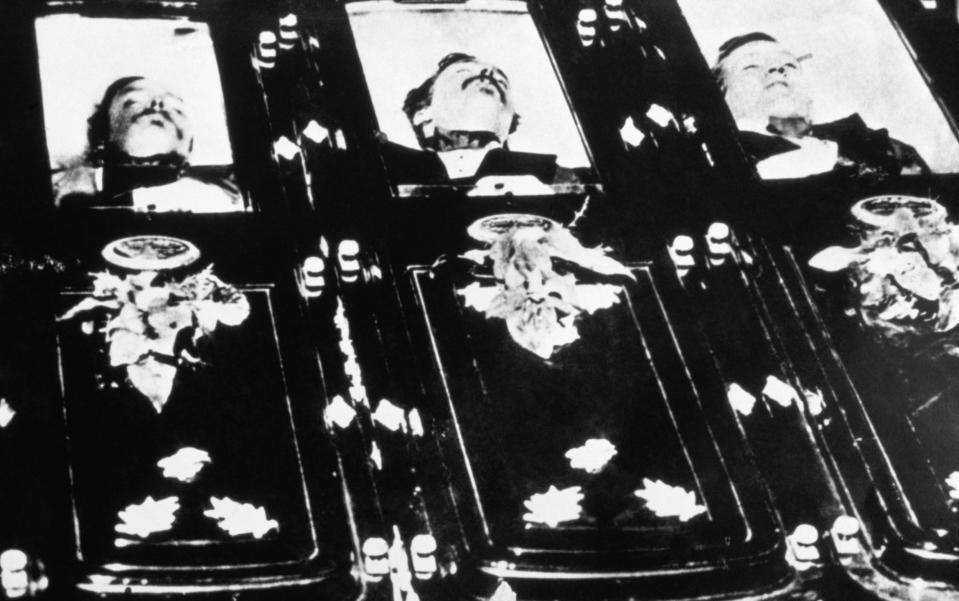
Graybill references the historian Robert R Dykstra. “He spent a lot of time convincingly debunking the idea that these towns were just infused with violence,” says Graybill. “Maybe because of the relatively thin populations, these murder rates per capita seemed high. But in terms of gross overall numbers, really not so much.”
The real violence, says Graybill, was between federal troops or settlers and Native peoples.
It's fascinating that the Wild West – generally referred to as the period between 1865 to 1890 – remains so culturally significant. “That’s only a portion of one person’s life,” says Garrett-Davis. “It witnessed a lot of change. But I’m 42 and the internet didn’t exist when I was a kid.” Also fascinating is what was happening in that period beyond the parameters of the West. Around the time The English is set, early cinema was in motion and the first skyscrapers were being built. The Tower Building opened in New York in 1889.
“I think one reason why the West seems to be ‘America, only more so’ – which is how the writer Wallace Stegner put it – is because at the moment the United States is becoming a modern industrial nation, the West is being conquered,” says Graybill. “The West is where a lot of these developments are happening – the extensions of the railroad, the range cattle industry. It’s the moment the West is being folded into the nation. The United States is becoming increasingly urban. Lots of folks located American virtue in rural America – you still see that in election campaigns today.”
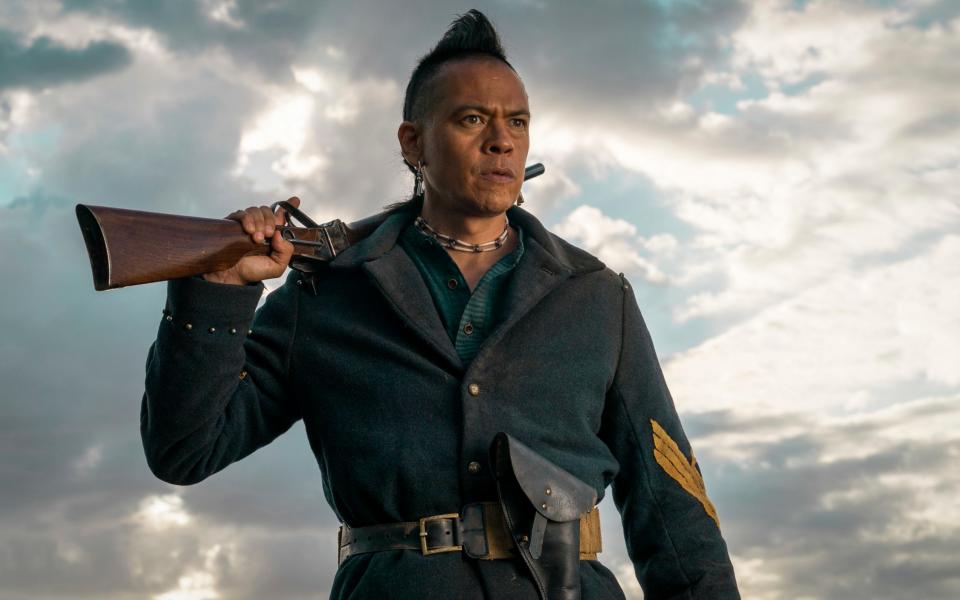
Just as the Western has changed over the decades – we’re now in what feels like the umpteenth generation of Western revisionism – historical perspectives on the West have also changed. “It’s interesting to track,” says Garrett-Davis. “In some ways I might even say that movies are a little ahead of academic historians and the mood they take.”
For instance, the heroic John Wayne-style Western mimicked the classic view of the West as described by the historian Frederick Jackson Turner. “A triumphalist tale,” says Graybill about Jackson Turner’s version of the West. Later, The Wild Bunch – which rode into cinemas in 1969 – channelled Vietnam-era anxiety. In the 1980s, the “new western history” movement emerged among historians: a darker, less heroic understanding of the West. “It’s a much more realistic portrait,” says Graybill. “But that’s now become orthodox. I think there are historians now trying to find the places where there might have been moments of harmony and peace – so it’s not just an unending tale of conquest. Though undoubtedly that is part of the tale.”
The English is a bleak and brutal vision of the West – moments of peace are as romanticised as the violence. And it says much about how the Western spins a yarn about contemporary times as much as real history. The English, for instance, foregrounds contemporary conflicts about colonisation and violent settlement. In a sense, it’s as much about atoning for the sins of the past as it is about rootin’, tootin’ six-shooter entertainment. Ultimately, though, it’s just another story set in the American West – a brief, bloody period writers and filmmakers just can’t seem to leave alone.
The English is on BBC iPlayer now

